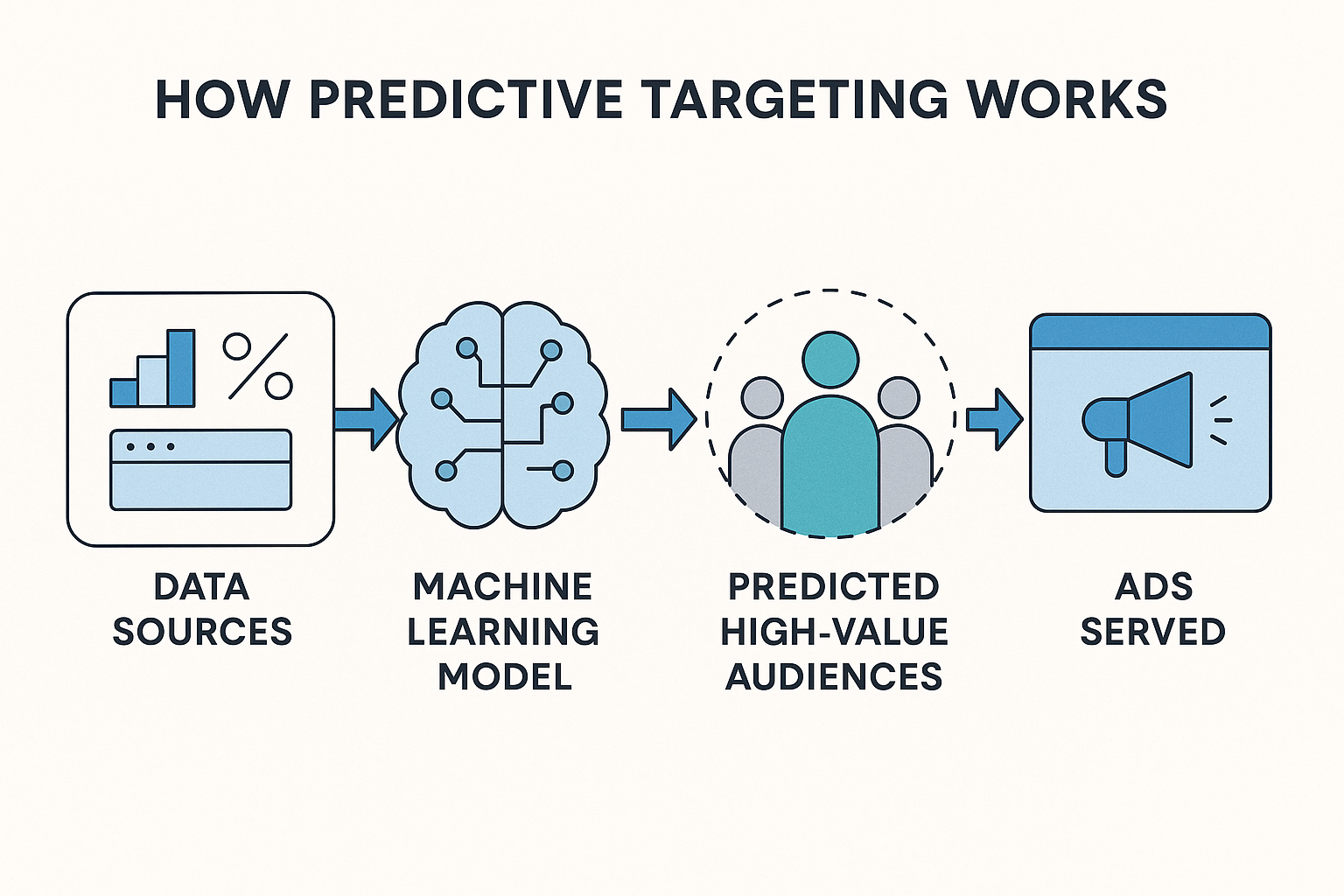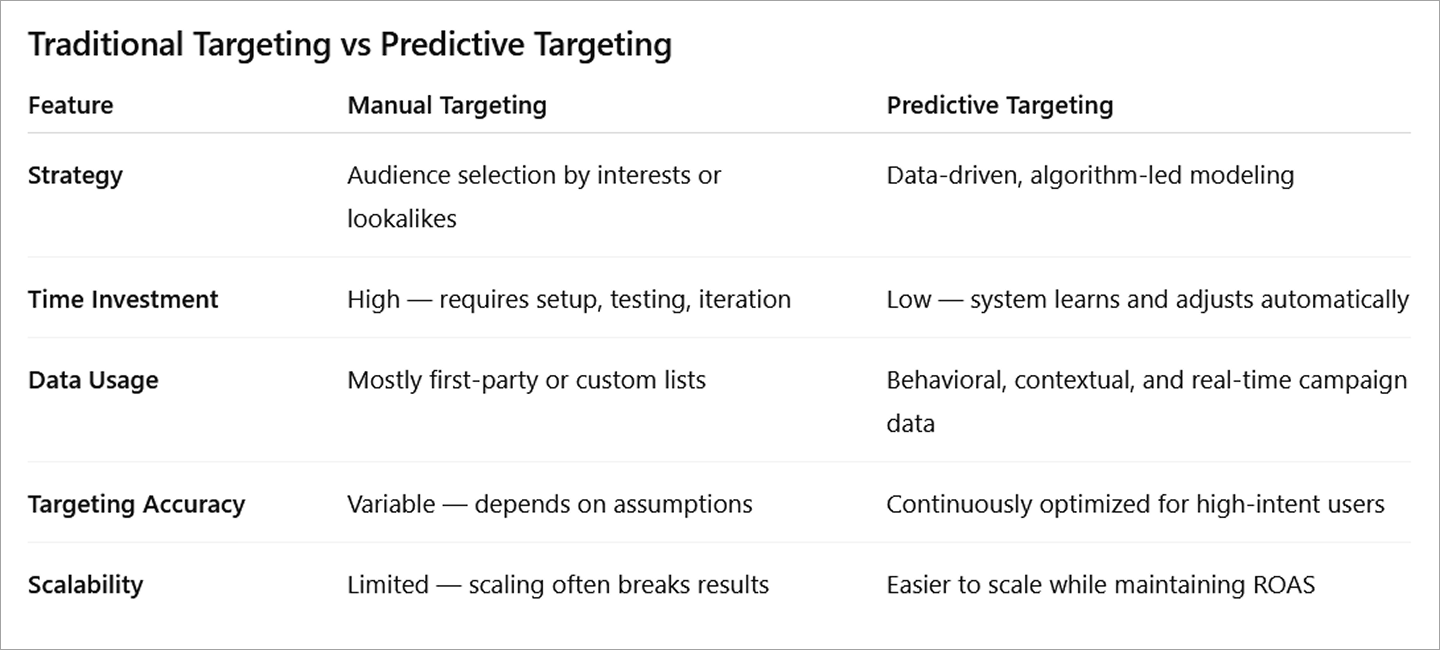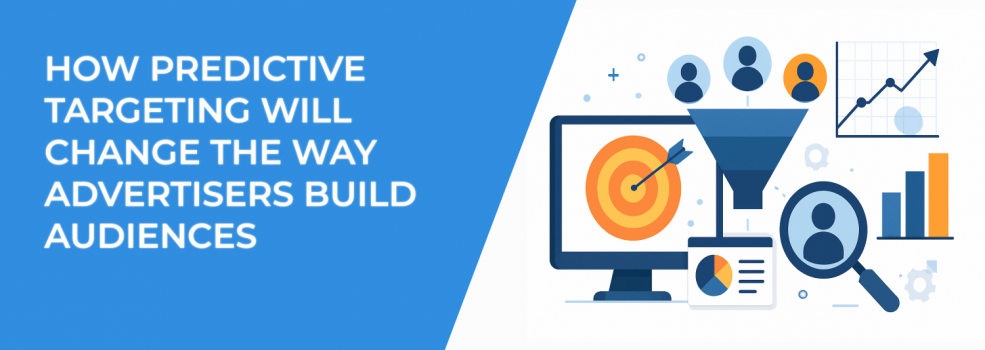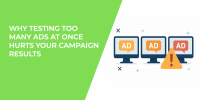If you're still manually stacking interests and behaviors to build ad audiences, you're doing extra work for worse results.
Predictive targeting is rewriting the rules. It flips the audience-building model upside down. Instead of guessing who to target, advertisers now let machine learning figure it out—faster, smarter, and with more data than any human could process.
So, what exactly is predictive targeting? Why is it taking over? And how can you start using it today without blowing your budget?
Let's unpack it.
What Is Predictive Targeting?
Predictive targeting uses machine learning and historical data to forecast who is most likely to convert, click, or take action.

Instead of choosing who you think will buy, the algorithm analyzes:
-
Past conversion data from your campaigns;
-
Behavioral signals on your site, such as scroll depth, repeat visits, and button hovers;
-
Campaign-level metrics like engagement, video views, and bounce rate;
-
Conversion values and lead quality indicators;
-
Broader third-party and contextual signals, where permitted.
This data feeds models that predict the people most likely to take high-value actions—and serves ads to them automatically.
It’s like lookalike audiences, but more advanced. Instead of relying on 1% audience modeling based on uploaded lists, predictive models evolve in real time. Learn more about the rise of predictive targeting in AI-powered campaigns.
Why This Changes Everything for Advertisers
This isn't just a new way to target. It's a new way to think about audience strategy.

When predictive targeting works well, advertisers see:
-
Faster feedback loops — you don’t need weeks of testing to find a winning audience because the system learns continuously;
-
Smarter budget use — fewer dollars wasted on the wrong eyeballs;
-
Scalable campaigns — when it works, it really works, letting you push budgets higher without burning ROAS.
It also reduces your reliance on outdated tactics like micro-interests and keyword-based segmentation. Many advertisers have already started adapting to smarter AI-powered targeting strategies as interest targeting declines.
This approach pairs especially well with modern ad campaign types like Meta Advantage+ and Google Performance Max, which are built around AI-driven optimization.
Real-World Examples
Here’s what predictive targeting can look like in practice:
-
A SaaS company feeds trial signup data into Meta. The system learns that users who scroll past 50% of the homepage and click the "pricing" tab are high-intent. It starts prioritizing people who behave that way before they ever click.
-
An e-commerce brand running a Performance Max campaign sees Google start showing ads to audiences that search less obvious keywords like "gifts for picky dads," because past buyers used similar queries.
-
A local business sees better results when switching from a narrow interest-based audience to a broader predictive campaign trained on store visit data.
How to Make Predictive Targeting Work for You
You don't need a data science team. But you do need to feed the system good signals.
1. Optimize Your Conversion Tracking
Make sure your pixel and events are set up correctly. Don’t just track purchases or leads. Track:
-
Scroll depth;
-
Button clicks;
-
Add to cart actions;
-
Initiate checkout;
-
Video views.
The more intent signals you send, the better the predictive model will perform.
2. Focus on Conversion Objectives, Not Interests
Want to break out of the limited learning trap? Stop stacking narrow interests. Instead, use broad targeting with a clear conversion goal.
Campaigns like Meta Advantage+ and Performance Max thrive on this. Broad and optimized almost always beats narrow and micromanaged.
For marketers still relying on outdated strategies, now is the time to understand how AI is improving ad targeting and reshape your audience building.
3. Test Creatives, Not Audiences
With the audience work handled by AI, your main job is testing:
-
Hook variations;
-
Format changes, such as carousel, video, and reels;
-
Offer positioning;
-
Emotional angles and brand storytelling.
This approach works beautifully when combined with AI creative tools that help scale ad production efficiently.
The Strategic Shift: From Picking Audiences to Shaping Signals
Predictive targeting shifts your role from selector to signal shaper.
Your job becomes:
-
Structuring campaigns so the algorithm can learn quickly;
-
Choosing objectives that align with business value, such as leads versus clicks;
-
Feeding the system conversion events that indicate quality, not just quantity;
-
Keeping creative fresh to engage different predicted segments.
This means every click, scroll, and bounce matters. Not just for user experience, but for future optimization.
Want to build audiences that perform better over time? Help the machine learn faster by giving it cleaner data and clearer goals.
For deeper insight into how this all fits into a larger automation strategy, check out our guide to automating campaign performance with AI tools.
The Takeaway
Predictive targeting isn’t a feature. It’s a mindset shift.
The sooner you embrace AI-driven audience building, the faster you'll:
-
Spend less time guessing;
-
Spend fewer dollars testing;
-
See more scale with less effort.
And in a privacy-focused world where interest targeting keeps shrinking, this isn’t just smart — it’s survival.
Get ahead now. Because predictive targeting isn't coming. It's already here.

